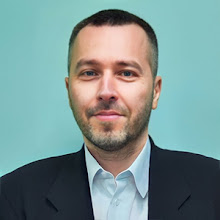 Sergiev Posad formed around the Trinity Monastery founded in 1345 (1337 by some evidence) by St. Sergius highly respected in medieval Russia. He entered Russian history as a Moscow prince associate in uniting Russian lands, but firstly as a monk preaching and implementing non-posession and diligence.
Sergiev Posad formed around the Trinity Monastery founded in 1345 (1337 by some evidence) by St. Sergius highly respected in medieval Russia. He entered Russian history as a Moscow prince associate in uniting Russian lands, but firstly as a monk preaching and implementing non-posession and diligence.
St. Sergius was born of wealthy Rostov boyars on May 3, 1314. On the 4th day a local priest baptized the child naming him Varfolomey (Bartholomew). From his childhood he grew accustomed to solitude and sought his salvation through prayer, fasting and work. In the early 1330s they moved to the Radonezh village south of the future monastery. In 1337, at the age of 23, after his parents’ death, he decided to leave for the desert together with his elder brother Stefan (Stephen). The brothers chose to found their hermitage in a clearing surrounded by a thick forest on a low hill, later called Makovets (a term often used to indicate a hill top). They built for themselves a cell and a small church dedicated to the Lifegiving Trinity. That was the birth of the Holy Trinity Monastery which later served as a source of pride and inspiration to Russians.
His hermit life was very difficult and required a good deal of perseverance and will. Stefan could not take the rigours of winter and the scarcity of food. He preferred life in an urban monastery and left Varfolomey for Moscow.
For about 2 years Varfolomey remained alone in the desert, and in silence and prayer he prepared himself for his monastic vows. After taking them with the name of Sergius, he lived even more austere ascetic life in solitude, reading the Bible, working in his garden and unceasingly praying.
Despite the distance of his hermitage, word concerning the exemplary ascetic life of St. Sergius soon spread everywhere and pious monks began coming to him in search of guidance. Later farmers and town dwellers used to come from all over for St. Sergius' blessing and advice and then settled in the monastery area. The Tartar yoke weighing heavily on the country caused its ruin and forced people to leave the most exposed regions and seek refuge in wilderness.
"…One night while St. Sergius was praying, he heard a voice calling his name. He was greatly surprised and, having read his prayer, he opened the window to see who had called him. A miraculous vision appeared before him. A great light coming from heaven made the night as bright as day. Once again a voice called him saying, “Sergius, you pray for your children and the Lord has heard your prayer. See how many monks have come together in honour of the Holy Trinity to be guided by you”. Then the saint saw a multitude of birds that were not only on the wall of the monastery, but also in the clearing surrounding it. The voice said: “The number of your monks will be as the number of the birds, and it will not decrease if they follow your path”."
Having become monastery abbot, St. Sergius did not change anything in his life and continued to work for all. He remembered the words of Christ, “The Son of Man did not come to be served, but to serve” (Mt. 20:28 ). He was not only a father but also a servant to all those who came to him, giving an example of humility and work. St. Sergius officiated every day, and he himself prepared alter bread, grinding wheat and making dough. He also prepared food, made boots and habits for the monks, carried water form a spring and left a bucket at each monk’s cell. He himself built 3 or 4 cells for other monks. He spent the night praying, eating only a little bread and water and never spent an hour without working.
Numerous miracles took place and many people were cured by St. Sergius' prayers. Gradually he became famous all over the country. Many pilgrims as well as suffering and poor people came to him for consolation. In his lifetime already he was revered as a saint.
For a long time the number of the monks was limited to 12. Then new candidates arrived and the community began to grow. The saint refused no one the right to enter the monastery. Among his disciples and followers there are about 70 canonised saints. In central and north-eastern Russia they founded about 50 monasteries, which became centres of Orthodox piety and spiritual enlightenment.
In 1355 the Trinity Monastery accepted communal regulations for every aspect of monastic life. The new order and more monks restructured the whole cloister. Scattered cells changed into a strict wooden settlement of 3 zones - public, residential and defensive. This scheme still exists today.
In 1380 Moscow Prince Dmitry (of Don) came to seek St. Sergius' blessing before leading his army for the Orthodox faith and liberation of Russia from the Tartar yoke since 1237. With this encouragement the grand prince won a great victory over the Tartar han Mamay on the Kulikovo field on September, 8. It was the 1st major Russian victory against Tartars. After that Moscow princes became Trinity Monastery patrons.
St. Sergius entrusted his holy and pure soul to God on September 25, 1392. St. Sergius' apotheosis in 1422 marked a new stage in the monastery history with a solemn laying of the Trinity Cathedral over his grave.

































